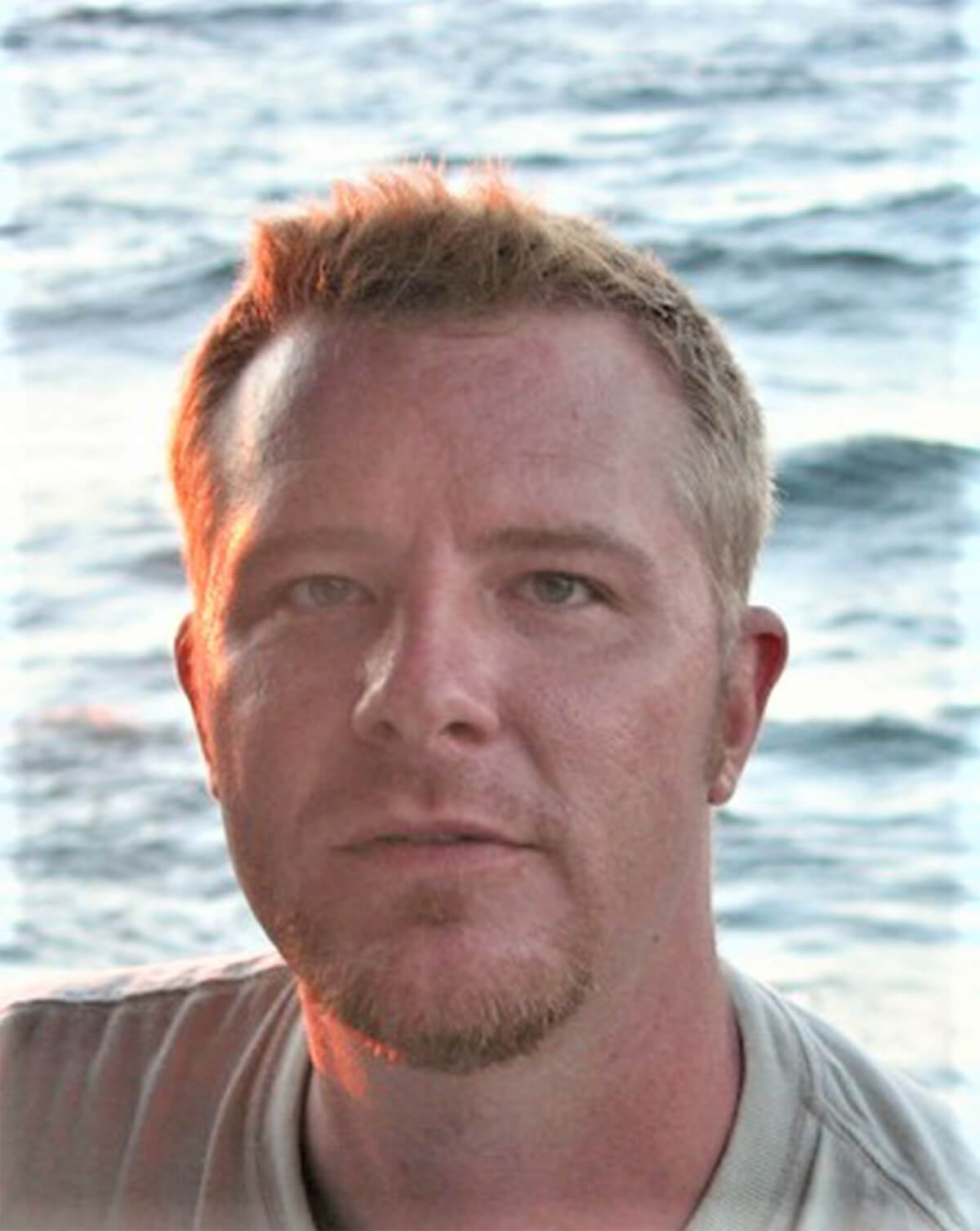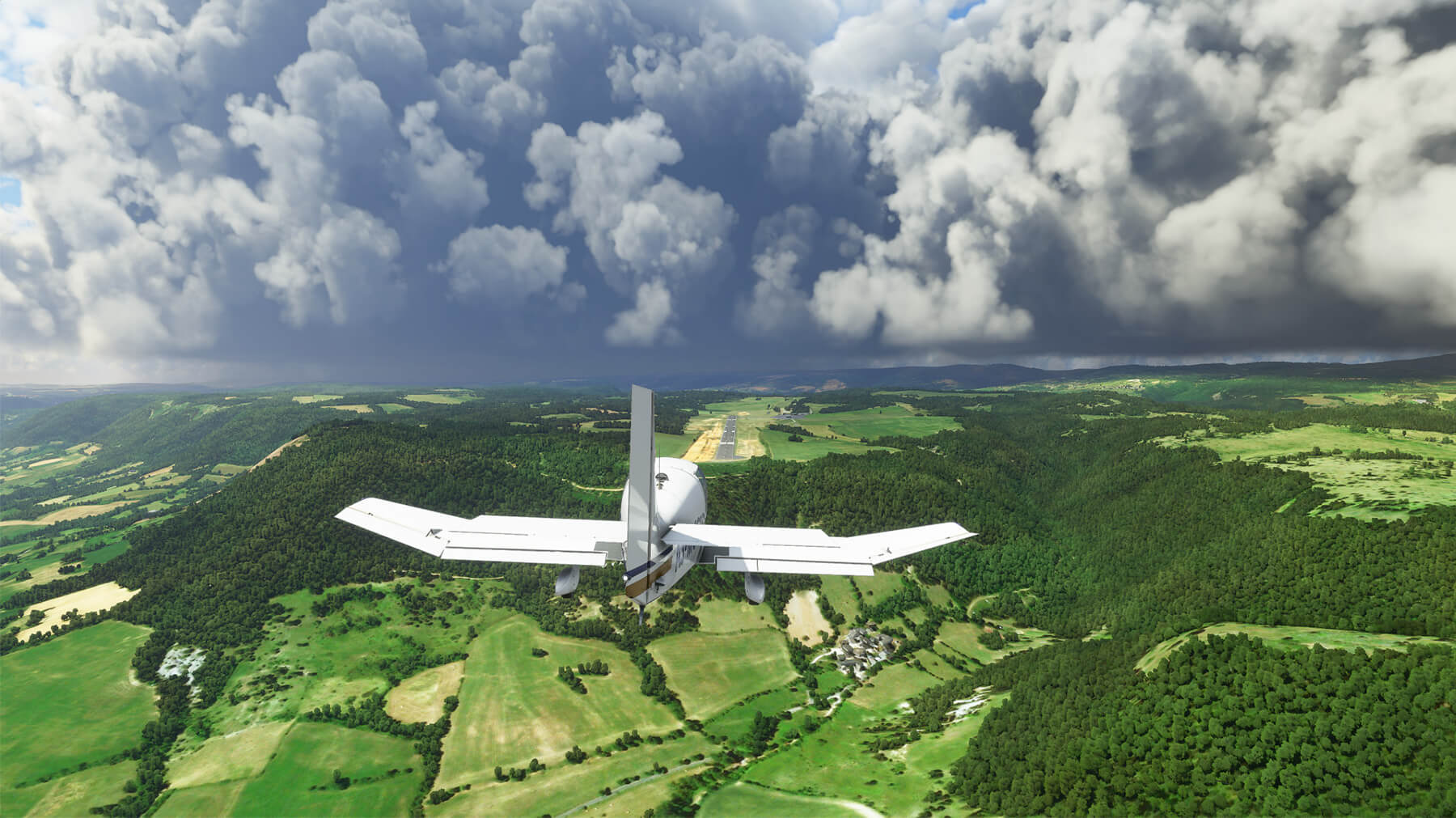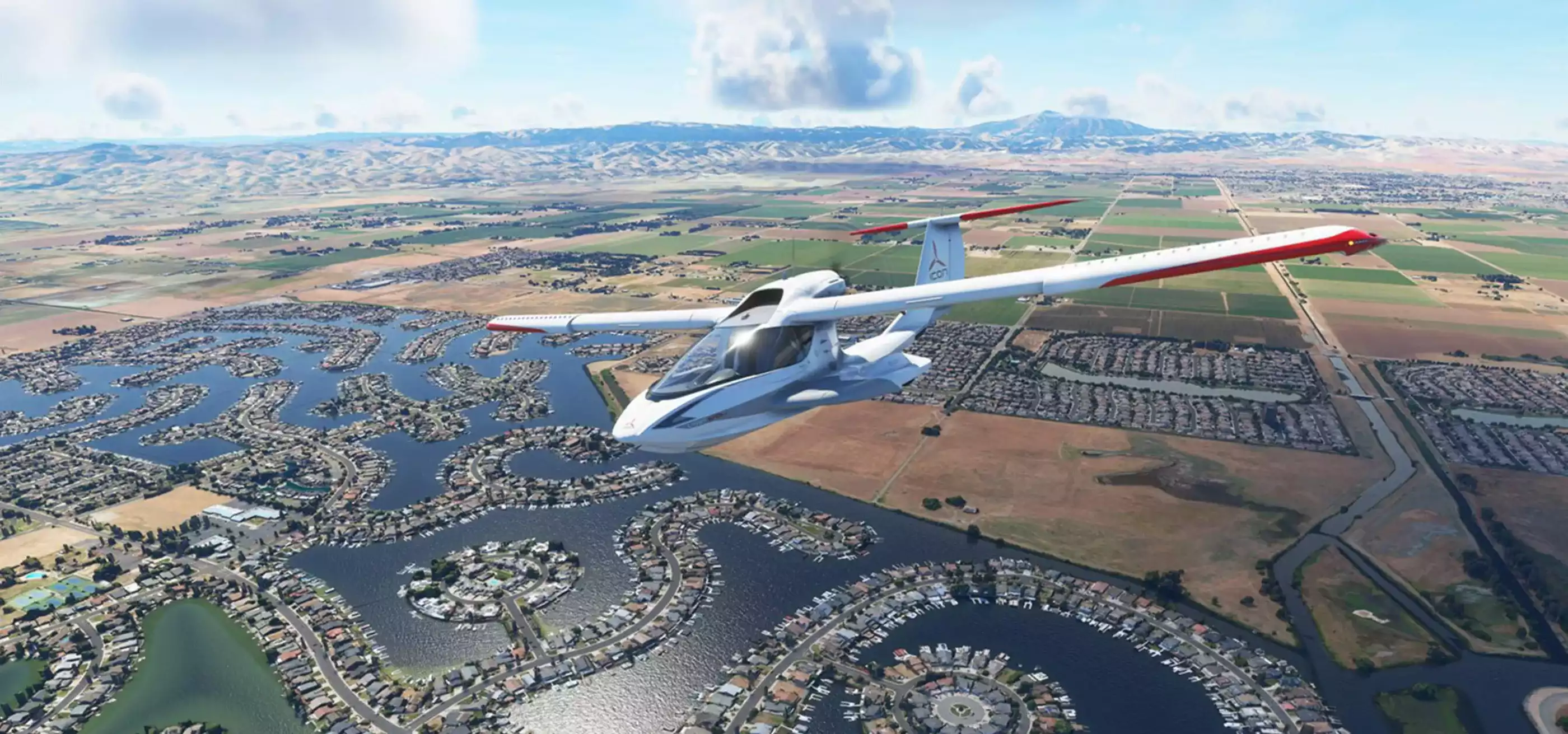The latest entry in the Microsoft Flight Simulator series has done what few other flight sims achieved before it — roused widespread interest and praise from people who aren’t die-hard flight sim fans.
Royal Winchester, a 2001 DigiPen graduate, former faculty chair of DigiPen’s Department of Digital Art, and a lead on Microsoft Flight Simulator, attributes the game’s success to a confluence of things. “I think part of it is, it’s really easy to get people’s attention when something looks as good as this thing does,” Winchester says, praising the graphics team and engineers at Microsoft’s French partner studio on the simulator, Asobo. “And then when you look under the covers of that beauty and it has mind boggling tech, that gets people pretty excited too.” Indeed, the fact that the game’s developers were able to graphically reproduce the entire Earth and simulate its weather systems in real-time, an astounding technological feat, is certainly another factor in its universal critical acclaim.

Winchester’s own success on the project also happens to be the result of a serendipitous confluence of things. Before he launched his career as an accomplished technical and digital artist by enrolling at DigiPen, he spent a decade in the U.S. Air Force. “My first three years in the Air Force, I worked as a physicist on the SDI Initiative, which was all about using lasers and stuff to shoot down missiles,” Winchester says. “Eventually, I transitioned into being a pilot. I flew everything from really fast planes to big heavy planes and got to travel all around the world.” When temporary health issues put a pause on Winchester’s flying career, he decided to pursue his other passion instead — computer graphics.
Enrolling in DigiPen’s 3D computer animation program in 2000, he was a quick study, so much so that he was invited back as a teacher after graduating. “I really loved it,” Winchester says of his time teaching. “I had great interactions with all the students, and I’m still really proud of the things they’ve gone on to accomplish.” In 2006, a temporary instructor at DigiPen who worked on Microsoft Flight Simulator was so impressed with Winchester’s teaching and CG skills, he invited Winchester to give a guest talk at Microsoft on the most modern modeling techniques at the time. The Flight Simulator team’s general manager, similarly impressed, ended up hiring Winchester to work on the game as well.
Winchester would work on the Flight Simulator series until the team closed down in 2009, continuing on at Microsoft R&D where he helped develop early protoypes of the HoloLens. He later joined Microsoft’s Age of Empires team, working on the newly remastered versions of the series’ first three titles, and serving as technical art director for the upcoming Age of Empires 4. When the Flight Simulator team suddenly started back up after a nearly decade-long hiatus, he came back on the project part-time. But eventually, he had to make a choice.

“I kind of had to choose to go 100 percent on Age of Empires or Flight Sim,” Winchester says. “It was a hard choice. Great people work on both projects. But in the end I just had to go with Flight Simulator. It’s too much of my history, blood, and passion. I’m super glad I did; it’s a great home for me.”
His team members at Microsoft and Asobo seemed to agree. Winchester’s responsibilities on Flight Simulator varied from design work on the game’s features to technical art work on the game’s rendering, lighting, and world. The rest of the time, Winchester served as the team’s de facto plane expert.
“The one area where there’s really no one on the team that has the same experience I do is all the stuff about aviation. How do planes fly? How do planes handle? What are the physics of flight?” Winchester says. That experience meant he was frequently tapped by Microsoft and Asobo to consult on many features.
“I work a lot with the physics people on making the planes feel right and behave correctly. I work a lot with the teams on how instruments work in planes. I work a lot with the teams on how navigation data works. I even work with the team on bringing live weather and air traffic control data into the sim,” Winchester says. “These different areas require real-world aviation knowledge, and since I flew professionally for over a decade, I have an experience base I can draw on.”
Part of Microsoft Flight Simulator’s appeal to the flocks of genre newcomers is that it allows players to fly anywhere in the world. To make that possible, Microsoft utilized a combination of Bing Maps imagery of the entire planet, photogrammetry, and modern machine learning algorithms that augmented the world with 2 trillion trees and 1.5 billion buildings. Players also encounter the weather as it is in real-time. Those features have enabled players to do everything from visiting 3D renders of their childhood homes to tracking Hurricane Laura from the sky as it happened.
“It just wouldn’t have been possible to make this game even just three to five years ago. It wouldn’t have been feasible. We have this incredible Azure-powered cloud where there are servers all over the planet and we can serve data to any end point in the world,” Winchester says. “Then there are all these amazing companies we could partner with like meteoblue, the Swiss weather prediction company we partnered with for the weather. They do incredibly detailed weather simulation, dividing the atmosphere around the globe into 250 million cubes all the way from sea level to the stratosphere. The fact that we can even serve that data live to people, that we can recreate the clouds in the sky in this sim, is crazy.” Winchester recalls a surreal moment when meteoblue told the Flight Simulator team that the game was the first time they got to visualize what they do for a living — collecting and simulating massive amounts of the Earth’s weather data.
“It’s sort of the philosophy of the project — taking advantage of the incredible amount of data in the world now, bringing it together, and serving it to customers who are thrilled with the kind of experiences that will give them,” Winchester says. “I’m constantly blown away by the sim honestly. But when it actually came out and the reviews came in, I never in my wildest dreams would’ve imagined they’d be so overwhelmingly positive. It was just super humbling.”
According to Winchester, his experience at DigiPen is still a part of everything he does. “I kind of have two buckets. I have what I received from DigiPen as a student, and what I received from DigiPen as a faculty member,” Winchester says.
Coming to DigiPen as a student in his 30s, among peers who were 18 and 19 years old, taught him to be open to new things. “The thing that will stop you more than anything is as soon as you start to believe you already know everything. You have to embrace change,” Winchester says. It’s a lesson he says he tried to instill in his students at DigiPen too, regardless of their age. “Teaching students CG, that’s great, but that’s just a skill. How do you teach someone how to think better in a way that will serve them for the rest of their lives? That was the most rewarding part of DigiPen, getting to help people in that way. It still informs a lot of the ways I think, perform, and behave today.”
